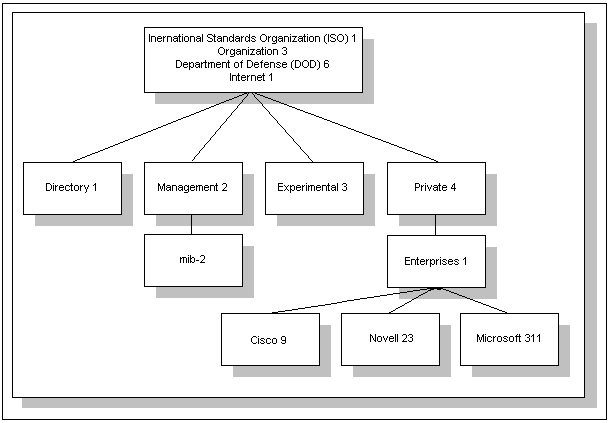|
||
| Products Download Events Support Videos | ||
Technical Support
On-Line Manuals
RL-ARM User's Guide (MDK v4)


 MIB Database
MIB Database
The data base controlled by the SNMP Agent is referred to as the SNMP Management Information Base (MIB). It is a standard set of statistical and control values. SNMP allows the extension of these standard values with values specific to a particular agent through the use of private MIBs.
The definitions of MIB variables supported by a particular agent are incorporated in descriptor files, written in Abstract Syntax Notation (ASN.1) format, made available to network management client programs so that they can become aware of these MIB variables and their usage.
The OID naming scheme is governed by the Internet Engineering Task Force (IETF). The IETF grants authority for parts of the name space to individual organizations such as Microsoft, Novell or Cisco. For example, Microsoft has the authority to assign the OIDs that can be derived by branching downward from the node in the MIB name three that starts with 1.3.6.1.4.1.311. Novell's OIDs branch down from 1.3.6.1.4.1.23. etc. You can see this structure in the diagram below.

The MIB variables are referred to as MIB object identifiers - OIDs. OID names are hierarchy structured and unique. SNMP uses the OID to identify objects on each network element (device running SNMP agent) that can be managed using SNMP.
ProductsDevelopment Tools |
Hardware & Collateral |
Downloads |
Support |
Contact |
